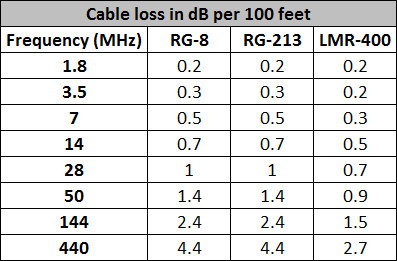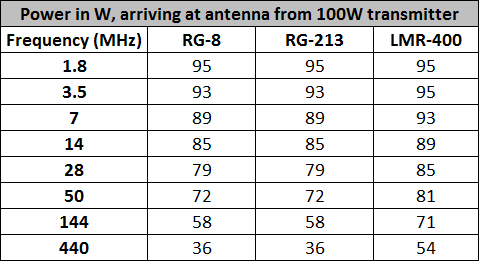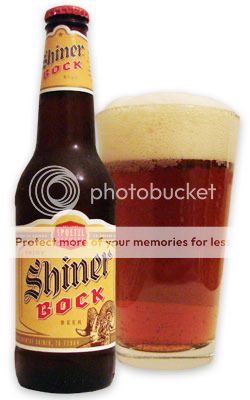Are you saying RG8X is preferable for HF over LMR400? If so, I've missed the boat big-time, and need some more details please.
Ok,
First off all I'm suggesting to this thread is that if the OP already have some good working condition RG8x installed on his mobile CB, nothing even slightly significant will be gained by replacing it with LMR240 just because the spec numbers look good. Once you compare the 2 types of coax on HF frequencies below 10 Mhz at 100 ft lengths, they are nearly identical.
The key here for comparisons is always at 100 ft lengths. Once you subdivide the lengths down to 20 ft or less for a mobile install or even 50ft or so for a base, the differences in losses seem trivial.
Other things to consider,
The skin effect depth at HF freqs is deep and you need a pure copper center conductor and copper shield like on RG type coax. Dielectric losses on HF are low so the center insulator can be a solid plastic type as used with RG213 or gas injected foam like RG8x.
At VHF & UHF the skin depth is shallow so the copper center conductor and copper clad aluminum used on LMR coax is OK but you need to have low loss center insulator like used on LMR cables because dielectric losses are high at VHF & UHF and beyond. This is exactly what LMR coax is designed for.
If you want the best, go with the large Heliax cables which is a hollow center conductor. That would be an extreme overkill for a mobile but if spec numbers really matter, go for it!
Remember, RF travels on the surfaces of a conductor not through the center of it. This is called the "Skin effect".
Here something to read...
LMR-400 for Ham Radio?
I see lots and lots of posts from people extolling the virtues of using LMR-400 coaxial cable in their ham radio setups. LMR (
Land
Mobile
Radio) cable was developed by Times Microwave Systems as a high quality coaxial cable which can be used with excellent loss properties at frequencies greater than 1 GHz. If your ham radio interests lie in the 1.2 GHz band and above, I can see no reason why you shouldn’t use the LMR series of cables in your setups, since the more traditional RG series of cables often are out of specification above 1 GHz.
However, if you are running the usual 1.8 MHz to 54 MHz range of frequencies, I see no technical reason[*] why you should use the LMR series, especially LMR-400, based on the loss characteristic. Even at 144 MHz, there is not much difference between LMR-400 and good old RG-8 or RG-213. Sure, the double-shielded LMR series of cables has a better shielding characteristic, but you need to figure out whether this alone is worth paying the premium for.
Don’t get me wrong – I’m not saying that coaxial cable loss is trivial – the receive mode antenna system noise figure can be dominated by the feeder attenuation (loss), since for a passive device, the noise figure equals the insertion loss. However, I have noticed a lot of posts from people swearing by LMR-400 due to its low loss, even in the HF bands, and I somewhat disagree.
Here are some numbers via the
Times Microwave Coaxial Cable Loss Calculator for 100 feet of cable:

Cable Loss (dB), 100 feet
To put this into perspective, if you’re running 100 feet of RG-8 or RG-213 and are thinking of upgrading to LMR-400 because of the loss you’re incurring, think again, especially if you mainly operate on the HF bands. Based on the above numbers, and a transmitter output power of 100W, the power arriving at the antenna using the same 100 foot length of the same types of cables would be:

Power at antenna, from 100W transmitter
So, if cable loss is your obsession, and that extra 4 watts is important to you on 40 meters, or if you think that extra 9 watts will make the difference to your QSO on 6m, then go ahead and use LMR-400. Remember, the numbers above are for 100 foot long lengths of cable, and it’s always good radio practice to reduce the length of your antenna feeder by as much as you can. When it comes to coaxial cable, less is more.
Also, remember that coaxial cables (even cable of the same type) are not constructed in the same way. Always examine a coaxial cable for shield coverage, and discard it if there is not complete coverage. Also, if you get the chance, heat up a piece of the shield braid and center conductor with a lighter flame and see how it is affected by the heat. Pure copper wire will glow while heated, but will hold its shape. Copper coated aluminum wire will glow, bend, and distort when heated.
Good luck!



